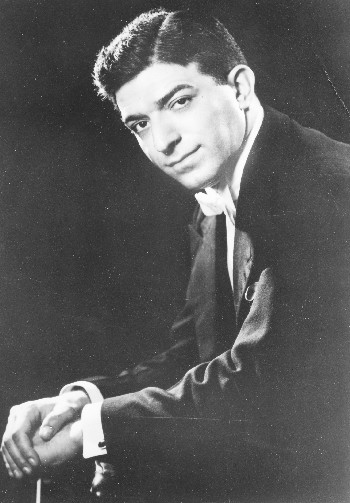Allegro
Remembering Siegfried Landau
Reminiscences
Volume CVII, No. 5May, 2007
The music community was startled and horrified on Feb. 21 when news came of the tragic death of Siegfried Landau, 85, founding conductor and first music director of the Brooklyn Philharmonic. Mr. Landau’s wife, the dancer and photographer Irene Gabriel, also perished as their upstate home in Brushton burned to the ground.
Mr. Landau had been a member of Local 802 since 1941.
He was music director and conductor of the Brooklyn Philharmonic from its inception as the Brooklyn Philharmonia through the 1970-71 season, when he resigned to focus on composing, recording, teaching and freelance conducting.
Mr. Landau led the Chattanooga Opera for many years and the Music for Westchester Orchestra. He also led the Westphalia Symphony — in what was then West Germany — for about ten years; he made 16 recordings with that ensemble.
In the last ten years, after suffering at least two heart attacks, he had to give up conducting and limit himself to occasional lecturing and music consulting.
Born in Berlin in 1922, Mr. Landau received his first formal training at the Stern and Klindworth-Scharwenka Conservatories there.
In 1939, he and his family fled Berlin for London, where he continued his musical studies at the Guild Hall School and Trinity College.
In 1940, Mr. Landau came to New York and worked several years with Pierre Monteux.
In 1943, he joined the faculty of the New York College of Music, which was then part of New York University. (It’s since been absorbed by the Mannes School of Music).
At the New York College of Music, Mr. Landau headed the Orchestra and Operas departments until the mid-1950’s.
He also taught cantorial lore at the Jewish Theological Seminary. His father was an Orthodox rabbi, descended from the famed Ezekiel Landau, chief rabbi of 18th century Prague.
Mr. Landau also served as music director for Shearith Israel, the Sephardic landmark synagogue on Central Park West.
He led the 92nd Street “Y” Chorus, many of whose members formed the core of the Brooklyn Philharmonia Chorus, which he established in 1956.
Before founding the Brooklyn Philharmonia, Mr. Landau had been a frequent guest conductor for the Carnegie Pops Concerts, the Hunter College Series and the Brooklyn Museum Concerts of that era.
As a composer, Mr. Landau is probably best known for the score he wrote for Anna Sokolow’s dance drama “The Dybbuk,” from which he derived two suites, plus his “Chassidic Suite,” “Sephardic Melodies for Strings” and a sacred service.
With this background, Mr. Landau was able to attract the best freelance musicians he had worked with in New York to form an outstanding core of players that became the Brooklyn Philharmonia, a few veterans of whom have continued to play with the orchestra until the current decade.
The new orchestra was taken seriously by the New York press, which then had six or seven dailies.
From the start, Mr. Landau was a pioneer in featuring a new work, or reviving a neglected masterpiece, on almost every program.
Natural educator that he was, Mr. Landau started youth concerts during the orchestra’s second season.
Free concerts in the schools and at BAM followed, as well as occasional programs with modern dancers and ballet companies, “operas in English,” and music contests for young musicians.
By the time Mr. Landau retired, the Philharmonia was already established as an important innovative orchestra.
Two years ago, when he was unable to attend the orchestra’s 50th anniversary dinner celebration because of ill health, he sent a little speech for the occasion, which concluded:
“When I was helpful in building the Brooklyn Philharmonic, I was thinking of a comment Georg Fredric Handel made after writing the Messiah and receiving great praise for it: ‘I would be sorry if I have only succeeded in entertaining them. I wished to make them better.’
“We thought by creating the Brooklyn Philharmonic we would create an orchestra that would play the best of music in Brooklyn. A culture is evaluated by the orchestra and musicians it creates. Please make this orchestra succeed as in the past. Good luck and good wishes.”
Maurice Edwards joined the Brooklyn Philharmonic at its inception in 1954. He later served as executive director and artistic director before becoming the official archivist upon his retirement. He is the author of “How Music Grew in Brooklyn: A Biography of the Brooklyn Philharmonic Orchestra” (Scarecrow Press, 2006).

